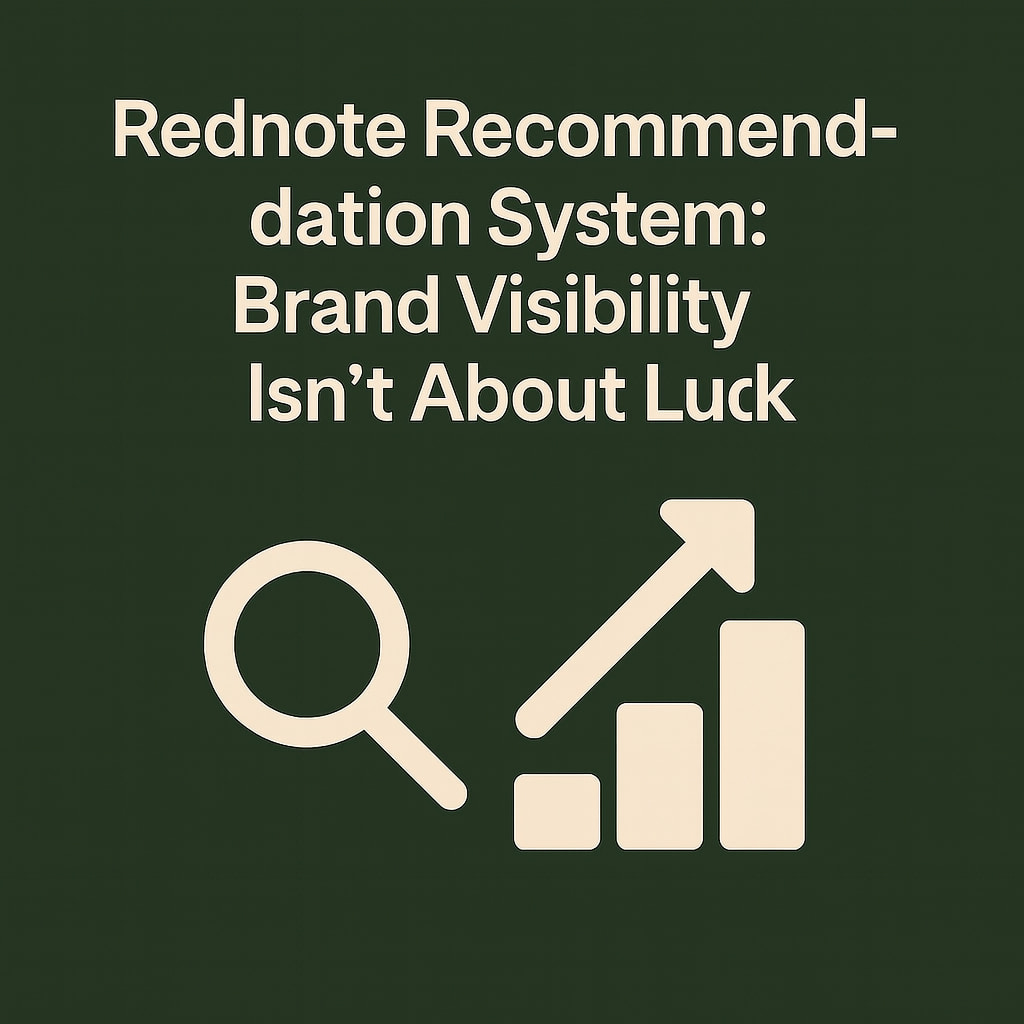Rednote Recommendation System: Brand Visibility Isn’t About Luck
By The Olivia
Independent Content Strategist for the China Market
This post is part of the “Content Platform” series. Click here to view the series introduction and why it was created.
Introduction
On Rednote, posting is the easy part — getting seen is the real work.
What decides reach is the platform’s internal structure, not randomness.
Many brands believe that good content will naturally find its audience.
What they miss is that visibility is a system output, shaped by how Rednote classifies and connects posts.
1. How the Recommendation System Works
Rednote distributes posts through signals that indicate relevance and reliability:
- Keywords – The system prioritizes notes matching frequent user searches and trending queries.
- Engagement patterns – Posts with meaningful interaction (saves, comments, shares) stay visible longer.
- Account focus – Profiles with consistent themes are easier for the algorithm to identify and recommend.
The outcome looks organic, but it’s built on structure.
2. Where Brands Often Go Wrong
Most visibility problems stem from misreading how the platform interprets content signals.
- Short-term thinking – Treating every post like a campaign launch rather than part of a pattern.
- Promotional language – Using marketing phrasing that triggers the ad filter and limits exposure.
- Scattered positioning – Posting across unrelated topics, which confuses the system’s categorization.
These issues aren’t about poor creativity. They reflect a mismatch between brand logic and platform logic.
3. What Actually Drives Sustainable Reach
Visibility on Rednote tends to follow a few consistent dynamics:
- Search alignment – Posts that echo how users naturally phrase questions stay discoverable longer.
- Rhythm and consistency – Accounts with recognizable posting habits gain system recognition faster.
- Interaction depth – Notes that invite participation signal reliability and keep being surfaced.
These are not checklist items; they’re indicators of content maturity.
When they align, distribution becomes predictable — but building that alignment takes analysis, not templates.
4. Why This System Matters
Rednote’s recommendation engine shapes who gets seen, how often, and in what context.
For brands entering China, understanding that mechanism is part of credibility management.
Without it, even strong creative work can disappear before it’s understood.
With the right structure, visibility stops being luck and becomes a repeatable outcome.
Conclusion
Rednote’s system isn’t random — it reflects how attention is organized.
Brands that learn to read those signals don’t chase virality; they build relevance that lasts.
← Back to All Articles
← Learn more about my services
You May Also Like:
Rednote Brand Starter Guide: Practical Steps for Getting Started
A beginner’s guide to Rednote (Xiaohongshu) for brands—covering goals, profile setup, content direction, posting rhythm, and performance tracking.
Evergreen Content in China: Why It Doesn’t Stick—and What to Do Instead
Evergreen content is supposed to bring long-term value. But on Chinese platforms, even the best ideas often disappear in days. Here’s why—and what to publish instead.
Content Distribution in China: How Platform Logic Shapes Visibility
Visibility on Chinese content platforms isn’t just about quality — it’s shaped by structure, fit, and user behavior.
Ready to take your content further?
Let’s build a strategy that resonates in the Chinese market.
THE OLIVIA WAY
© 2025 THE OLIVIA WAY. All rights reserved.
